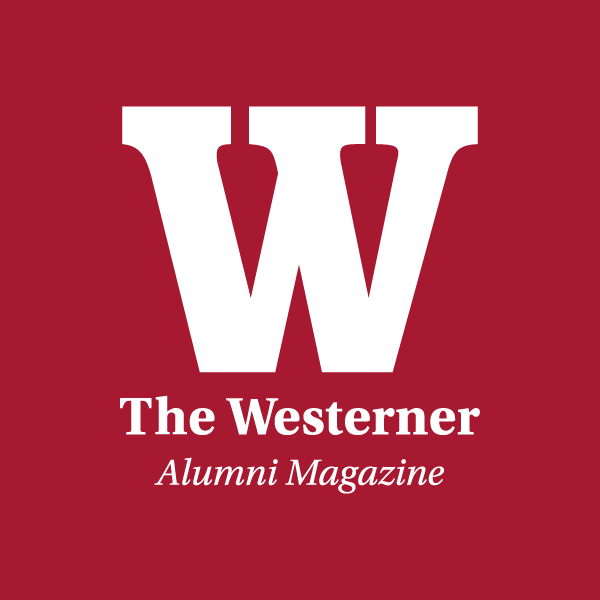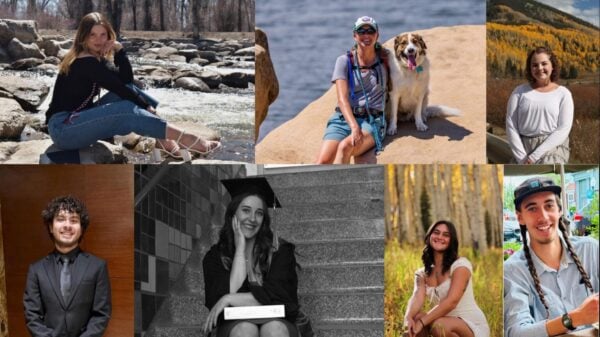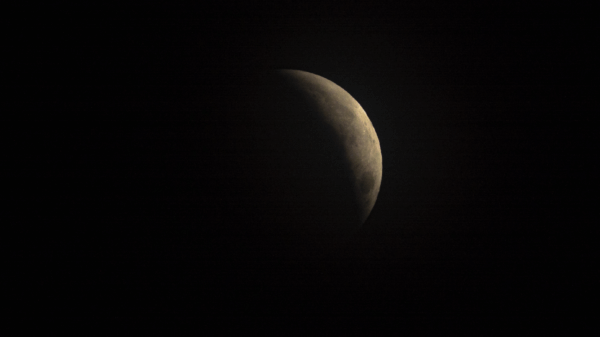We want to hear from you.
Let us know what you’ve been up to since you graduated. We might even publish your letter in the next online or print edition. Complete the form at the bottom of this page to submit your own letter to the editor.
-
MLAA Letter to the Editor
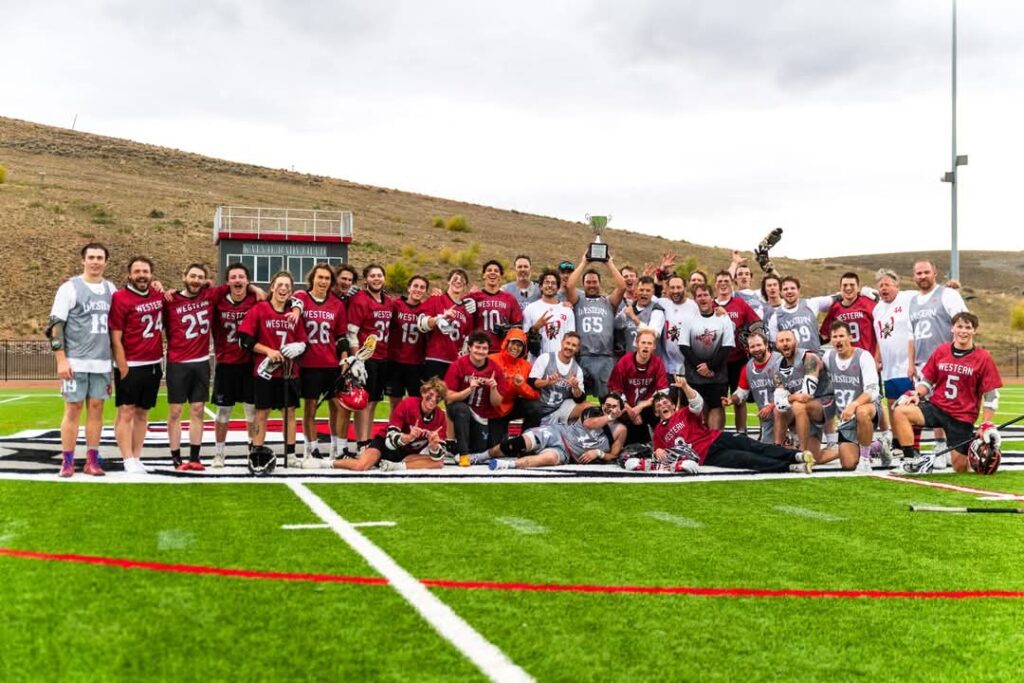
Founded in 2002, the Western Colorado University Men’s Lacrosse team is a growing community of students looking to continue their lacrosse career, or find the spirit to become a new player to the game. The team competes in the Men’s Collegiate Lacrosse Association (MCLA), within the Rocky Mountain Lacrosse Conference (RMLC), as a Division 3 team.
In 2024, working closely with the University, the Men’s Lacrosse Alumni Association (MLAA) was born. The MLAA is a brotherhood built on a shared passion for lacrosse. The association plays a crucial role, fostering the community of Mountaineer spirit while also serving as a major fundraising arm for the team. The MLAA provides professional networking opportunities for alumni and current players, and even coordinate meals or lodging when the team travels to alumni-populated areas.
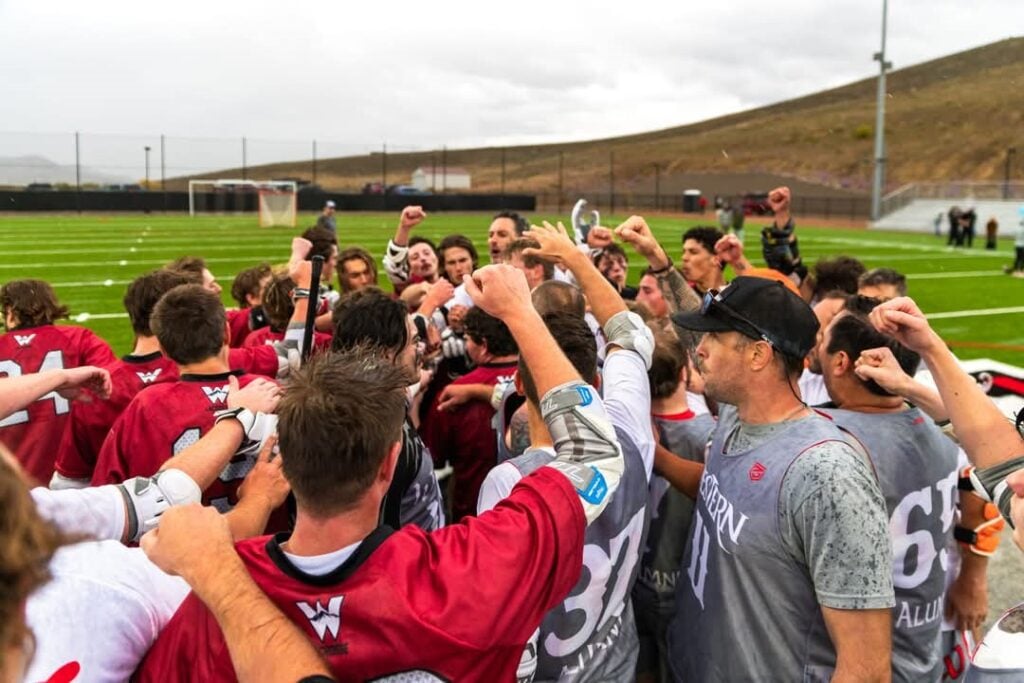
As a campus club, the current players receive no scholarships and rely entirely on each other for club dues, fundraising and the generosity of volunteer coaches from the Gunnison Valley community. Funding remains the greatest challenge, with equipment, league fees, travel, and all expenses increasing.
Beyond the competition, Mountaineer Lacrosse offers all students on campus invaluable professional development opportunities such as experience in sport management, sports photography, videography, media communications, graphics design, game-day logistics, and travel arrangements. These roles provide practical skills applicable to any career path and bring students together across a wide variety of interests.
This year, the MLAA honored one of their own, team founder Dan Johnson, lost to cancer, by creating the ‘DJ Memorial Cup’ at the annual alumni game. This game, held every homecoming weekend, is a powerful reminder of the lasting impact of Western.
We are asking for your support. Your contributions are vital to ensuring the continued success of this program. Donations will directly offset rising costs and help provide the best possible experience for our student-athletes. To donate, please visit the Western Foundation webpage or contact WesternMLAA@gmail.com with questions.
Any amount is deeply appreciated. Go Mountaineers!
Sincerely, Western Colorado University Men’s Lacrosse & Alumni Association.
-
Greetings from the MFAA
The Mountaineer Football Alumni Association is a non-profit organization that works with the Western Colorado University (WCU) Foundation, the athletic program, and specifically the football program to raise money for football scholarships. Anyone can join as a member and we have approximately 80 current members, raising $75,000 yearly to football scholarships. The goal is to reach 300 members and achieve $300,000 in donations.
WCU football is approximately 10 scholarships below our peers and what the NCAA regulations allow. Yet, Western has been ranked in the top 10 nationally for the past few years even though the program is competing with a scholarship disadvantage.
The renovated Mountaineer Bowl is a great start to help in recruiting, but the football program is still hamstrung due to the lack of scholarship dollars. Coach Bains and his staff are dedicated to recruiting players who embody the Mountaineer spirit, both on and off the field and the University has set a goal to increase enrollment by approximately 900 students in the near future. Increased student enrollment enhances WCU and the entire community while providing a wider perception of the University and elevating its visibility and appeal. A successful athletics program with a positive family-friendly environment will help attract new students and improve retention. The MFAA is dedicated to helping achieve this goal and we are always accepting new members. New membership funds are deposited directly into the MFAA Legacy Fund and new members are asked to make a tax-deductible donation for an amount that is comfortable for each member. Every dollar positively impacts Mountaineer Football and helps to provide Coach Bains and his staff with the resources needed to take the football program to the next level.
Learn more about becoming a member or to donate below. Every contribution matters. Your support sends a powerful message to WCU student-athletes: you believe in them and their potential.
Join the fight today!
Michael Wade, MFAA President
mrwade05312@gmail.com


-
“Bigfoot” celebrates 50 years of Western camaraderie
Fifty years ago, two alumni of Western Colorado University and a several friends started a tradition of getting together every summer for a men’s camping trip. After several fun filled years and the addition of new friends, we decided we needed an official name and after much deliberation, we finally settled on the name Bigfoot for our group.
Over the years the majority of trips have been in the mountains of Colorado and Wyoming and as our group has grown we have taken some epic adventures in some beautiful places. We have taken a house boat up the Mississippi River, rented house boats on Lake Powel (three times), a horse packing trip into the Sangre de Cristo Mountains and a fishing trip to Rainy Lake in International Falls, MN.
Although the trips first started primarily as camping trips, we have progressed to renting Ranger cabins here in Colorado.
This year, in honor of our first trip, we met for a week at Harmel’s Resort on the Taylor River. There were 13 alumni and several friends that have been involved in our Bigfoot trips over the years. We loved getting together once again to reminisce, eat good food and toast some wine to our friends who couldn’t make it.
Bigfoot voted this year to continue our outings, but change from every year to every 2 yrs.
-Larry Fitzsimons (’71)

The picture includes: FRONT ROW (L to R) – Jim Inglis ’72, Larry Fitzsimons ‘71, Dave Inglis ’74; BACK ROW – Mel Coleman ’72, Gary Rogers ’76, Terry McLachlan ’72, John Inglis ’71, Gary Jessen ’73, Doug Taylor ’74/’77, Larry Klick, Greg Widmar ’72, Bill Howard ’73, Greg Coleman, Fred Iozzo ’72.
-
An Incredible Journey that Started at Western
After my graduation from the Western Geology program in 2015, I ventured to the University of Texas at Austin Institute for Geophysics (UTIG) to obtain a Ph.D. in Geosciences. At UTIG, I utilized my Geology and Mathematics background, forged by the amazing professors at Western, to become a solid-earth geophysicist. My Ph.D. studies primarily used marine active-source seismic data to tackle several major outstanding questions in plate tectonics: What processes allow continents to break up and form new ocean basins? And how do new subduction zones initiate and become self-sustaining convergent tectonic boundaries?
I was fortunate to participate in two marine seismic expeditions aboard the R/V Marcus G. Langseth to collect new deep-penetrating, high-quality multichannel seismic reflection and wide-angle seismic refraction datasets in New Zealand. These experiences cultivated my passion for sea-going fieldwork. I love getting to work with diverse scientists from all over the world in remote places and exploring what lies beneath the Earth’s oceans!
My research projects were part of the broader National Science Foundation GeoPRISMS community, which is a collection of geoscientists dedicated to studying tectonic processes along rifted margins and subduction zones. This was exciting and gave me the opportunity to collaborate with a wide range of scientists and present my research at various scientific workshops and meetings.
In 2021, I finished my Ph.D. at UTIG and received a Postdoctoral Research Fellowship from the Lamont-Doherty Earth Observatory (LDEO) at Columbia University in New York City. Over the last few years, I have expanded my research program and applied my geophysical skills towards better understanding geohazards at subduction zones. I worked with a new seismic dataset from the Cascadia margin along the northwest US, and also helped lead a new seismic dataset acquisition with the Langseth offshore Mexico as a Co-Chief Scientist. As I write this note, I am currently sailing on the JOIDES Resolution, a scientific ocean drilling vessel, as a Physical Properties / Borehole Geophysics specialist for International Ocean Discovery Program Expedition 402. We have 30 geoscientists from all over the world, along with 130 total crew on this massive 470-foot-long ship, with the goal of drilling down over 12,000 feet and recovering rocks from the Earth’s mantle in the Tyrrhenian Sea.
Now in my third year as a postdoc at LDEO, I am hoping to land a full-time tenure-track faculty job soon and continue studying the tectonic process on our planet and helping train the next generation of geoscientists. Coming out of high school, I was not a very good student, and I could have never imagined I would be where I am today. I truly give all the credit to the fantastic educational environment at Western, which has such a positive and hands-on teaching culture that sparked my curiosity and gave me the encouragement I needed to succeed.
Brandon Shuck (’15)
-
Western Students from the 1960s use 21st Century Technology to Keep in Touch
The early 1960s was a special time for several Western students who were active in the Drama Department and theatrical productions of the time. Growing out of their nostalgia for their time at Western and their desires to keep in touch with each other, in 1985, these students organized a reunion held that summer in Gunnison at which a large number of them attended. Especially in their intentions for the occasion were to honor their professors, Dr. Martin Hatcher, Dr. Ted Johnson, Dr. Jim Brewer, Dr. Jess Gern, and Dr. William Edmonson, all of whom were also in attendance.
The participating former Western students were: Bob Austin, Leona Barrera (’64), Linda Beckman, Brandy Bielby, Tracy and Vickie Carrington, Carol Dussault, Wendy Dustin (’65), Doug and Donna Faulkner, Jerry and Charlee Gaddy, Janis Hawkins, Karen Henderson Shafer (’65), Charlie Johnson (’64, ’66), Rusty (Nancy Jane) Kellner, Robert Kerswill, Charles Marshall, Soni Pantzer, Bill Peery (’65), Larry Scheideman, Kathy Shelton, Connie Trainer (Durand), Larry Varvel, Frank Venturo, and (Eric) Harold White
The success and the further desire to keep their connections active led a smaller number of these same students to organize another reunion in Gunnison in the summer of 1999. Yet a third but smaller Gunnison reunion was held in 2002. In the years following, a handful of these students kept in touch and occasionally traveled to Gunnison to meet with their previous professors, enjoy each other’s memories and company, and celebrate their time at Western.
Technological progress since the 1960s has come a long way, needless to say. While the first reunions were organized using only “snail mail” and telephone calls, by the late 1990s, the invention of the Internet was revolutionizing interpersonal communications in ways unimaginable to the children of the ‘60s such as email and VOIP. By the early 2020s, when communications technology and the Internet had further developed, one of the results was Zoom, the Internet program that facilitates interpersonal communications through live audio and video.
The development of the Covid pandemic led to the recognition of the possibilities of this new Zoom technology.
Wendy Dustin Kaufman (Narrowsburg, NY) and William Peery (Boulder, CO) came up with the idea of using this new technology for connecting occasionally with their close friends from Western of the ‘60s. Along with Karen Henderson Shafer (Gleneden Beach-Lincoln City, OR), Leona Barrera (Manitou Springs, CO), and Charlie Johnson (Las Vegas, NV), an initial Zoom meeting was organized. These calls, going from coast to coast across three time zones, were so successful and so much fun for the participants that it was decided that the Zoom meetings should be every month. So, since 2020, Wendy Dustin Kaufman, Bill Peery, Karen Henderson Shafer, Leona Barrera, and Charlie Johnson have met for a Zoom mini-reunion every month.
Thus, using the latest in 21st-century Internet communications technology, Western students from the 1960s are able to keep up their close interpersonal connections and enjoy each other’s company every month in 2024.
Charlie Johnson (’64 ’66)
-
Philanthropy is More Than Giving
As a member of the WCU Foundation Board, I have had the privilege to see how philanthropy can create a transformational impact on Western’s faculty, staff, and students. What is incredible, though, is the effect giving can have on the giver, as much as on the places to which we give.
Philanthropy’s impact goes deeper than just a dollar amount. I have seen alumni invest their time, meeting with faculty and staff to understand the needs and aspirations of academic departments. I have seen and heard of Western alumni investing their talents – speaking to classes and mentoring students. Through their treasures, they have given funds to establish endowed scholarships that will benefit generations of Mountaineers.
In all of these interactions, I’ve seen alumni, parents, and friends develop deeper relationships within our Western community that have enriched their lives and experiences while creating meaningful opportunities and building Western’s capacity for research and innovation.
The Elevate Western Campaign is an exciting opportunity for our Western Family to come together in support of WCU’s ambitious goals to strengthen the University and grow the academic enterprise to better meet the needs and ambitions of our students. Our $80 million goal is bold, and it is amazing to see that more than 6,000 people have given to support this exciting campaign so far.
We will only reach this goal if everyone gives, as they can. These gifts join together and create incredible impact, and they will serve to knit us together, creating a stronger community that is invested in WCU’s success. That’s truly a brighter future for our Mountaineers, and I am excited to see what goals we will meet – and surpass—as we come together.
Ryan Liles
